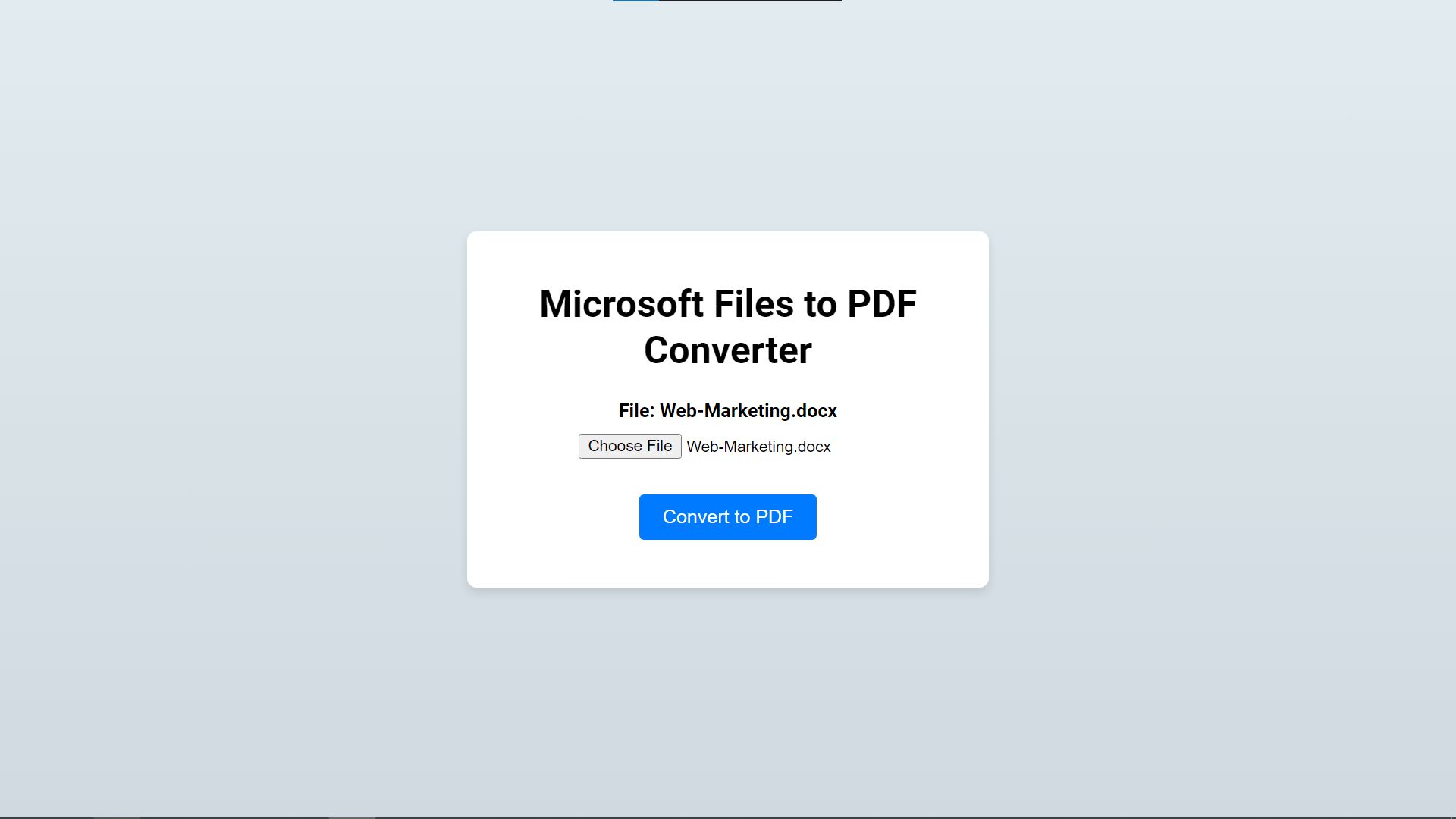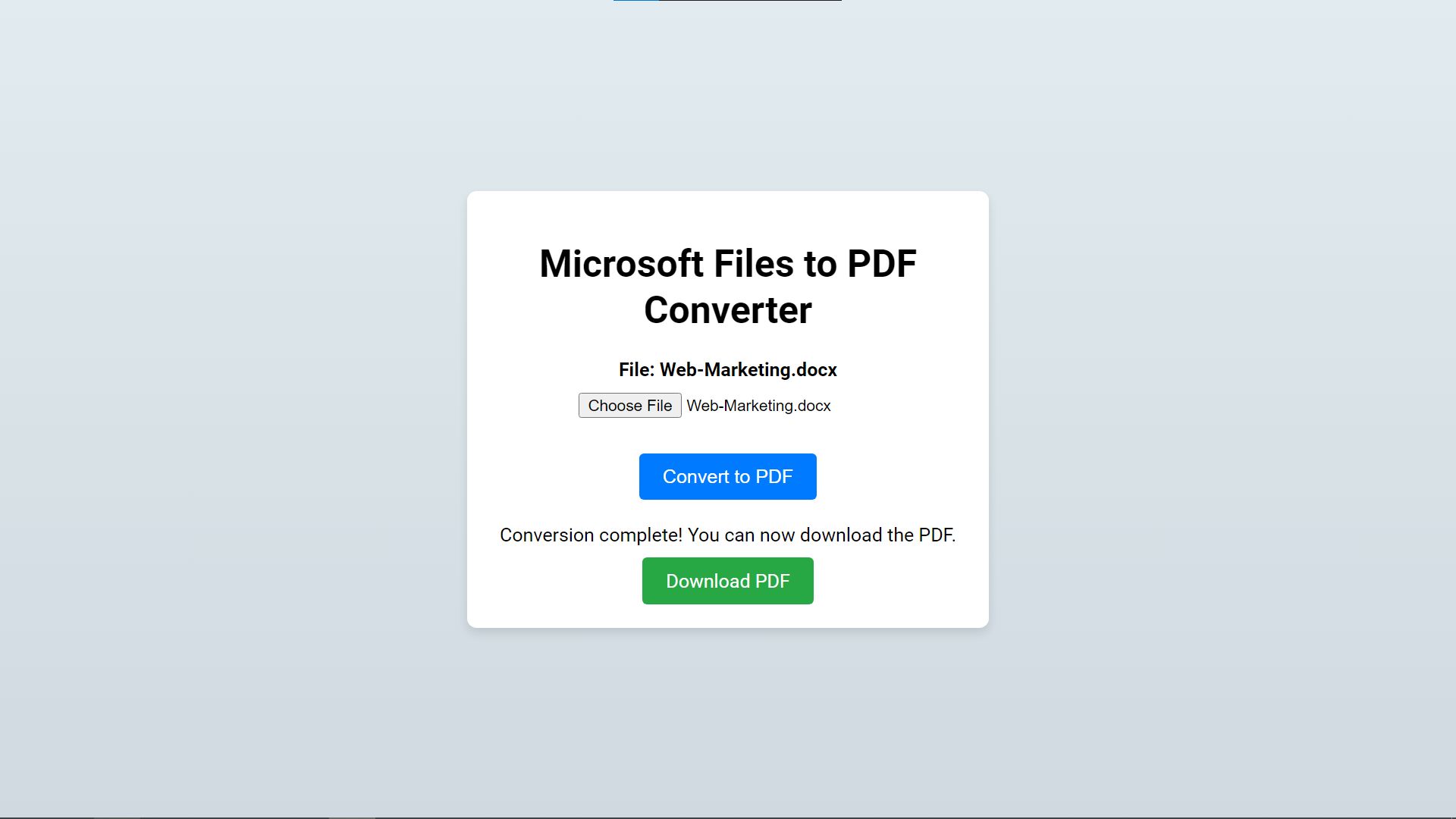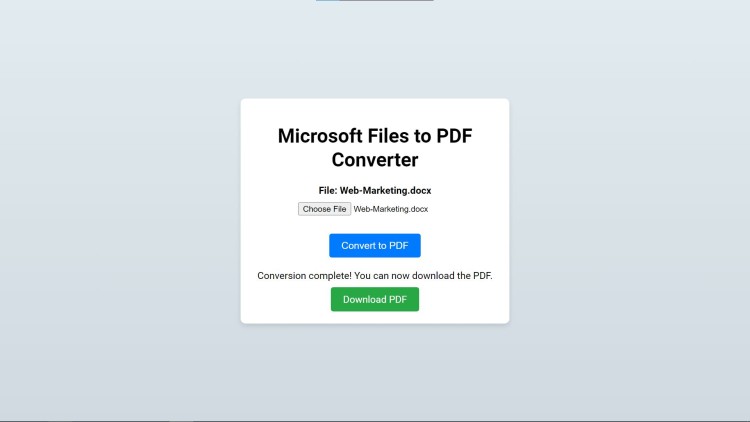Microsoft Files to PDF Converter Using HTML, CSS and JavaScript with Source Code
Welcome to the Microsoft Files to PDF Converter, a user-friendly web application designed to make the process of converting your Microsoft Office files into PDF format both simple and efficient. Whether you have a Word document (DOCX), an Excel spreadsheet (XLSX), or a PowerPoint presentation (PPTX), this tool enables you to transform your files into PDFs with just a few clicks. Built with HTML, CSS, and JavaScript, the converter offers a seamless experience, complete with a clean interface and responsive design that works smoothly on any device.
This application leverages the powerful ConvertAPI to handle the file conversion process, ensuring that your documents are accurately transformed into high-quality PDFs. The process is straightforward: upload your file, click to convert, and download the resulting PDF in seconds. Whether you're working on a desktop or mobile device, this converter provides a reliable and convenient solution for all your file conversion needs, making it easier than ever to manage your documents.
You may also check this simple HTML, CSS and JavaScript project:
- Fonts Pairing Checker
- QR Code Maker - Scan to Email
- Auto Change Random Quotes
- Double Accordion FAQ Page
- Add Tag Input Box
Features:
- File Upload: Users can upload Microsoft Office files directly from their local device.
- PDF Conversion: The app converts the uploaded DOCX, XLSX, and PPTX files into PDF format using the ConvertAPI.
- Download Option: After conversion, users can easily download the PDF file with a single click.
- Responsive Design: The interface is responsive, ensuring optimal usability across various devices and screen sizes.
Technologies Used:
- HTML: For structuring the content and layout of the web application.
- CSS: For styling the application, ensuring a modern and visually appealing interface.
- JavaScript: For handling the logic, including file upload, conversion requests, and handling the API responses.
- ConvertAPI: A third-party API used for converting Microsoft Office files to PDF format.
How to Use:
- Upload a File: Click on the "Choose a Microsoft file" button to select a DOCX, XLSX, or PPTX file from your local device.
- Convert the File: After selecting the file, click the "Convert to PDF" button to initiate the conversion process.
- Download the PDF: Once the conversion is complete, a download link will appear. Click on the link to download your PDF file.
Sample Screenshots of the Project:
Landing Page

Upload File

Converted File (Ready to Download)

How to Run?
- Download the provided source code zip file.
- Extract the downloaded zip file.
- Open the html file and you are now ready to go!
Video Demonstration for Installation/Setup:
Conclusion:
In conclusion, the Microsoft Files to PDF Converter is an efficient and accessible tool that simplifies the conversion of DOCX, XLSX, and PPTX files into PDF format. With its straightforward interface and seamless performance, it caters to users who need quick and reliable file conversion without the hassle. By leveraging modern web technologies and the robust ConvertAPI, this application ensures that your documents are converted with precision, making it a valuable resource for anyone looking to manage their digital files effortlessly.
That's it! I hope this "Microsoft Files to PDF Converter Using HTML, CSS and JavaScript" will assist you on your programming journey, providing value to your current and upcoming project.
For additional tutorials and free source codes, explore our website.
Enjoy Coding :>>
Note: Due to the size or complexity of this submission, the author has submitted it as a .zip file to shorten your download time. After downloading it, you will need a program like Winzip to decompress it.
Virus note: All files are scanned once-a-day by SourceCodester.com for viruses, but new viruses come out every day, so no prevention program can catch 100% of them.
FOR YOUR OWN SAFETY, PLEASE:
1. Re-scan downloaded files using your personal virus checker before using it.
2. NEVER, EVER run compiled files (.exe's, .ocx's, .dll's etc.)--only run source code.
Comments
Add new comment
- Add new comment
- 694 views

